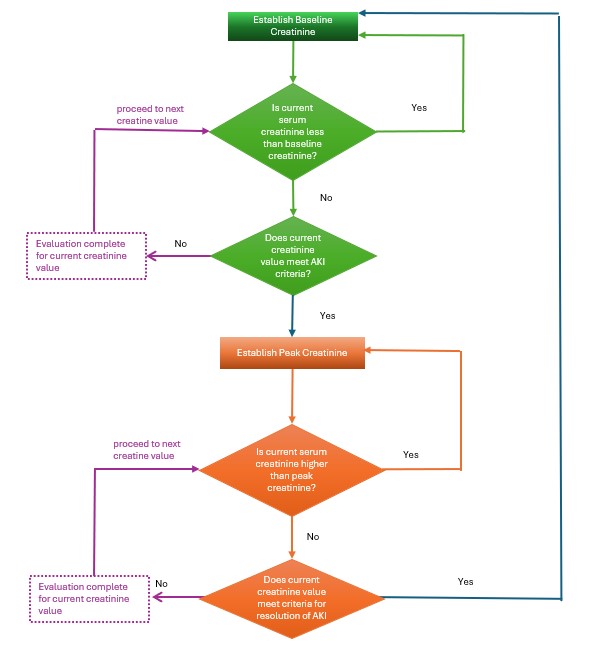Neonatal Nephrology/AKI 1
Session: Neonatal Nephrology/AKI 1
003 - Automated Informatics Tool to Identify Acute Kidney Injury in the Preterm Neonatal Population
Saturday, April 26, 2025
2:30pm - 4:45pm HST
Publication Number: 3.3790
Elliott Huang, Columbia University Vagelos College of Physicians and Surgeons, New York, NY, United States; Kenrick Cato, University of Pennsylvania, Bronx, NY, United States; Sumit Mohan, Columbia University, New York, NY, United States; Pamela I. Good, Columbia University Vagelos College of Physicians and Surgeons, New York, NY, United States

Elliott Huang, MD MPH (he/him/his)
Clinical Postdoctoral Fellow
Columbia University Vagelos College of Physicians and Surgeons
New York, New York, United States
Presenting Author(s)
Background: Acute kidney injury (AKI) in infants is associated with poor health outcomes and increased mortality. Identifying neonatal AKI is challenging since serum creatinine reflects maternal creatinine at birth and fluctuates during the first days of life, confounding trends in serum creatinine. Past studies were limited to short reporting periods and manual chart review.
Objective: The purpose of the study was to develop an automated informatics tool to retroactively detect episodes of AKI and their resolution using patient-level data for neonates less than 33 weeks gestational age.
Design/Methods: A retrospective chart review was conducted at Columbia University Irving Medical Center Morgan Stanley Childrens Hospital NICU for infants born between February 1, 2020 to December 31st, 2022 and < 33 weeks gestational age at birth. Patients with < 2 serum creatinine values, those who survived < 48 hours, and those made comfort care at birth were excluded. A python-based data pipeline was developed to identify patients meeting neonatal KDIGO criteria for AKI based on serum creatinine (urine output was not included in this analysis) >48 hours after birth, severity of AKI episodes from peak creatinine, and resolution of the AKI events using definitions previously defined in neonatal AKI literature (Figure 1). The validity of the pipeline in correctly identifying AKI and the resolution of the AKI events were assessed by manual review of patient charts.
Results: A total of 731 infants < 33 weeks gestational age were identified. Among them, 57 infants were excluded based on the exclusion criteria, leaving 674 remaining patients. In the validation of AKI identification, a random sample of 20% (n=134) of all patient charts were reviewed, and all were correctly labeled by the tool. The validity of AKI resolution was assessed in 35 patients with multiple AKI episodes, with resolution correctly identified in all patients. One episode of AKI had the start of the episode incorrectly identified, but resolution was correctly detected. The preliminary run of the pipeline identified 86 patients (12.8%) with ≥1 AKI episode (Figure 2).
Conclusion(s): An automated informatics tool has been developed to identify patients with neonatal AKI. This tool can be applied to patients of all gestational ages. Future validation in multi-center populations will allow for the studying of AKI over longer reporting periods in an efficient manner, as well as serve as the foundation for a clinical decision support tool identify AKI in real time.
Figure 1. Flow Diagram for AKI Informatics Tool
 Visual demonstration of the steps for identifying AKI and resolution for each serum creatinine value.
Visual demonstration of the steps for identifying AKI and resolution for each serum creatinine value.Figure 2. AKI Events by Gestational Age
.png) Number of AKI events by gestational age and sex.
Number of AKI events by gestational age and sex.
